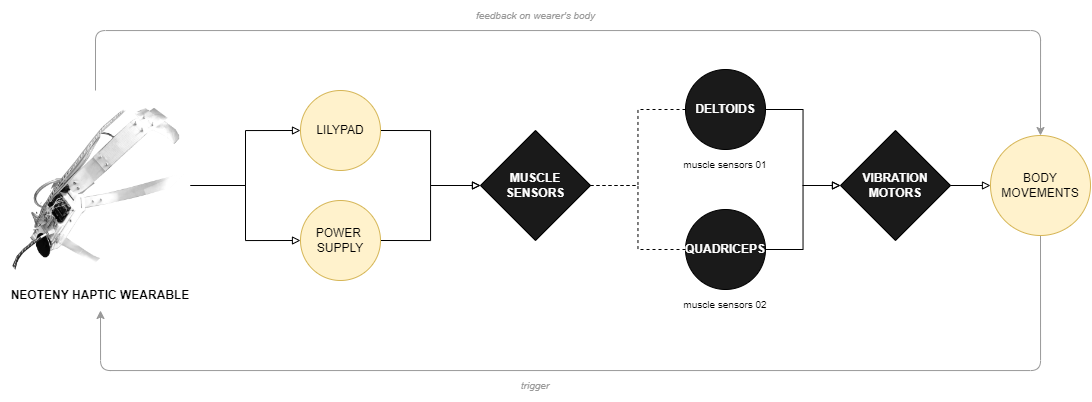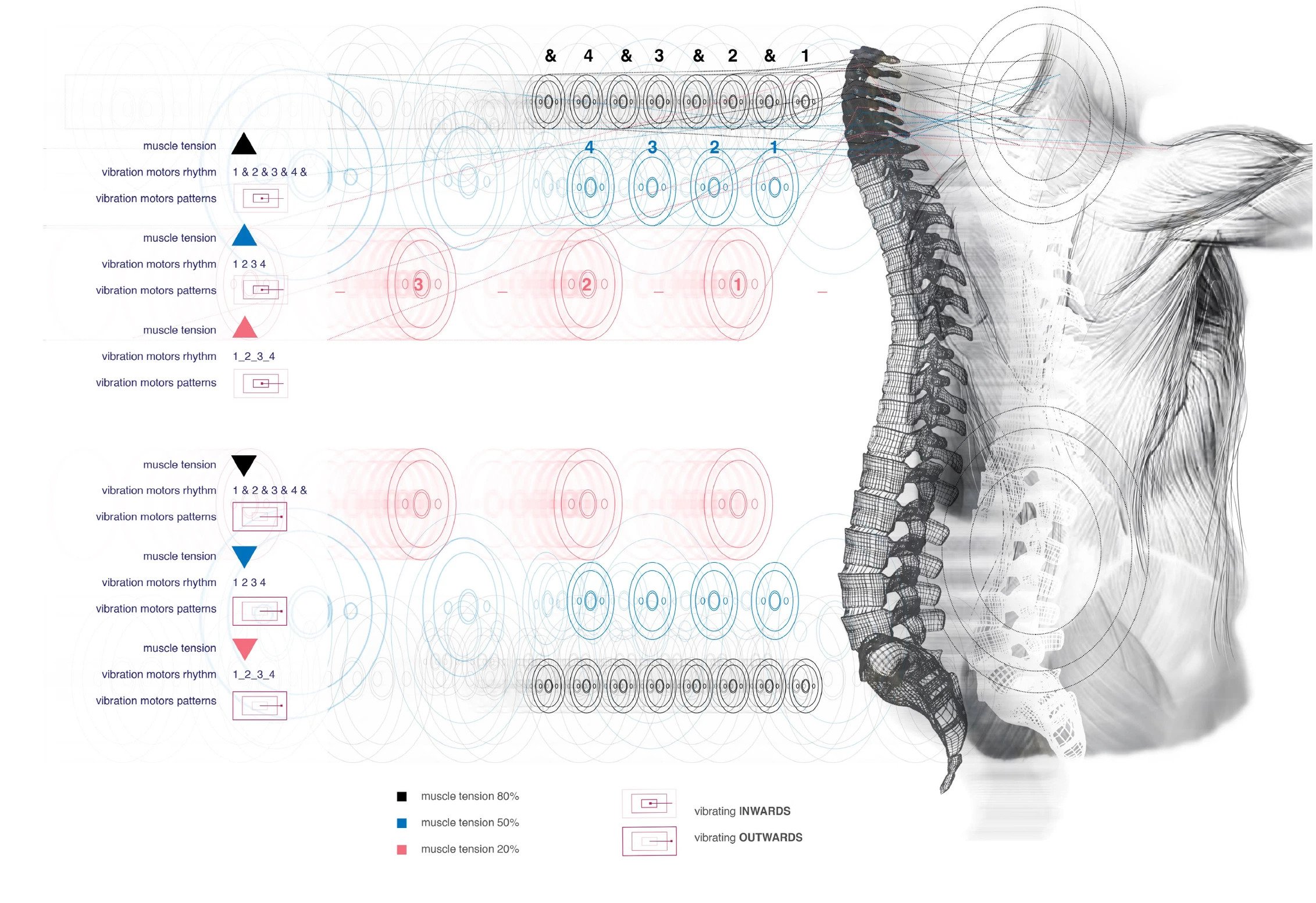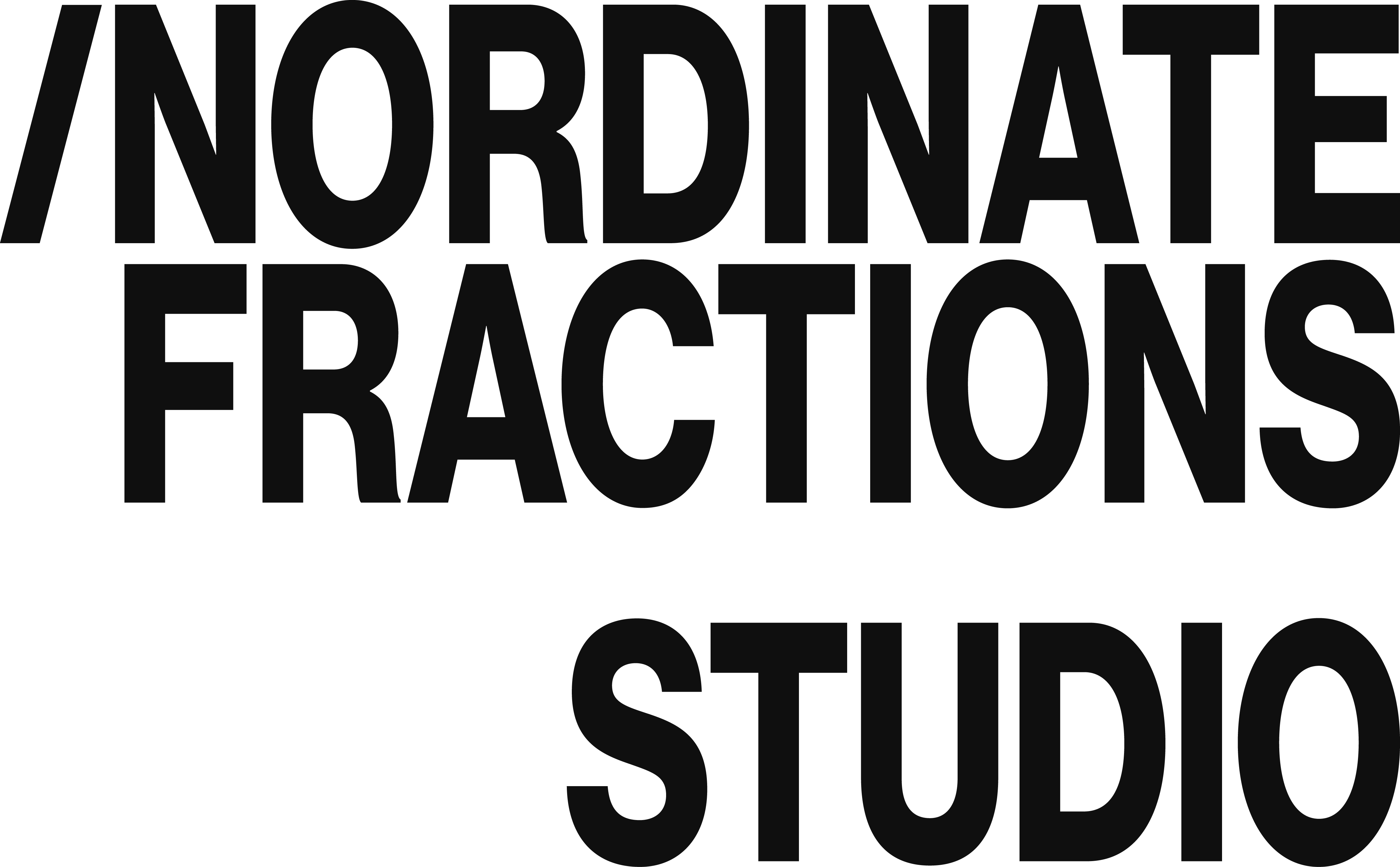Designing Neoteny.
2018
Concept and Research by Hui Sim Chan'Knowing that our body has long been a site of our life story, where our memories and experiences were formed additionally through the interactions and connections of our five senses with environmental stimuli.'
Human beings are known for taking the five senses for granted. It is well into the 21st century while developing this project, that the human-technology relationship has been explored. The human-machine interactions (HMI) have very much raised the possibility of having an external device as part of our extended cognition (Clark and Chalmers, 1998). In this project, I aim to create a wearable that would raise awareness of our minds and body. It looks at design as a tool to question the ownership we have of our bodies. 'Neoteny' will serve as a test site to investigate new approaches and possibilities of our body movement in the environment, and also, critically examine the impact on the body over time.


The Neoteny I system is comprised of muscle sensors input, and vibration motors output. Both muscle sensors were attached to the shoulder (deltoids) and thigh (quadriceps) respectively, and vibration motors on the back. It was then actuated by the muscle activity level. This experiment was conducted through my own body by wearing it for a week, 3 hours per day respectively.
The observations and documentation have been recorded in three different stages: before, during, and after. This aims to compare the effect on the user (Wigley, 2001). As predicted, the external wearable device was able to affect our perception of our body and the environment by heightening our bodily self-consciousness.

As technology and the human body are converging, we are creating hybrid extensions of ourselves. Whether through physical devices or digital data, this raises questions about how we might begin to install, program, alter and maintain these intimate parts and what new ecologies of people, devices, and data will start emerging and evolving to sustain these new practices on our body.
![]()
However, questions of data privacy have been raised, and arguments such as how much data do we still own ourselves. These questions then motivated the following project: [Engineering Neoteny]
How can I design a subtle communication that can form a seamless connection with my mind through a new body extension?
And what can we then expect from the next generation of wearable devices?
EXHIBITIONS
Living Lab
Group Exhibition
Ars Electronica, Linz, Austria [2018]
Project Faire
The Bartlett School of Architecture, UCL [2018]
PROJECT DEVELOPED AT


